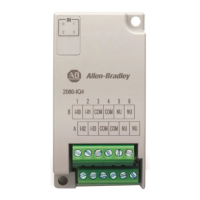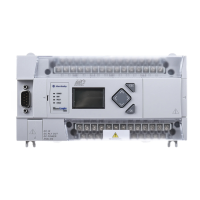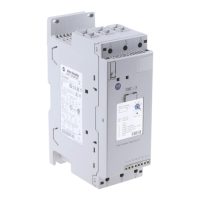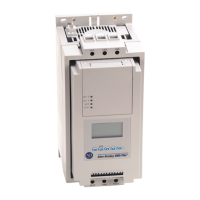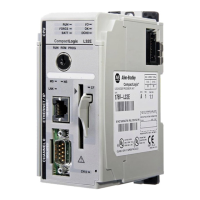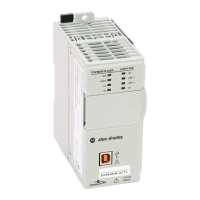Rockwell Automation Publication 2080-UM002M-EN-E - April 2022 331
Appendix G Connect to Networks using DF1
The following table shows the parameters for configuring a Micro850 (2080-
L50E) or Micro870 (2080-L70E) controller as a master station using standard-
communication mode to talk to slave stations.
Table 75 - Configure a Micro800 Controller as a Master Using Standard-communication
Mode
Parameter Selections
Baud Rate
Select a communication rate that all devices in your system support. Configure all
devices in the system for the same communication rate.
Parity
Parity provides additional message packet error detection. To implement even
parity checking, choose Even. To implement no parity checking, choose None.
Node Address
A node address identifies the controller on the DF1 half-duplex link. Each station
on a link must have a unique address. Choose an address between 0
10
and 254
10.
Node address 255
10
is the broadcast address, and cannot be selected as a
station’s individual address.
Control Line
This parameter defines the mode in which the driver operates. Choose a method
appropriate for your system’s configuration:
• If you are not using a modem, choose NO HANDSHAKE.
• If the master modem is full duplex, choose FULL-DUPLEX (RTS ALWAYS ON).
• If all the modems in the system are half-duplex, choose HALF-DUPLEX WITHOUT
CONTINUOUS CARRIER (RTS/CTS).
See Modem Control Line Operation
on page 328 for a description of the control
line operation settings.
Error Detection
With this selection, you choose how the controller checks the accuracy of each
DF1 packet transmission.
BCC: This algorithm provides a medium level of data security. It cannot detect:
– transposition of bytes during transmission of a packet
– the insertion or deletion of data values of zero within a packet
CRC: This algorithm provides a higher level of data security.
Select an error detection method that all devices in your configuration can use.
When possible, choose CRC.
Polling Mode
If you want to receive:
• only one message from a slave station per its turn, choose STANDARD (SINGLE
MESSAGE TRANSFER PER NODE SCAN). Choose this method only if it is critical to
keep the poll list scan time to a minimum.
• as many messages from a slave station as it has, choose STANDARD (MULTIPLE
MESSAGE TRANSFER PER NODE SCAN).
Duplicate Packet Detect
Duplicate Detect lets the controller detect if it has received a message that is a
duplicate of its most recent message from another station. If you choose
duplicate detect, the controller will acknowledge (ACK) the message but will not
act on it since it has already performed the message’s task when it received the
command from the first message.
If you want to detect duplicate packets and discard them, check this parameter.
If you want to accept duplicate packets and execute them, leave this parameter
unchecked.
ACK Timeout
The amount of time, in 20 millisecond increments, that you want the controller to
wait for an acknowledgment to the message it has sent before the controller
retries the message or the message errors out. This timeout value is also used for
the poll response timeout. See page G-332 for recommendations to minimize this
value.
2. On the Serial Port configuration page, select
Half-Duplex Master for DF1 Mode.
3. Choose a Standard Polling Mode.
4. Configure the rest of the communication
driver according to Table 75
.
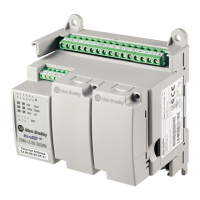
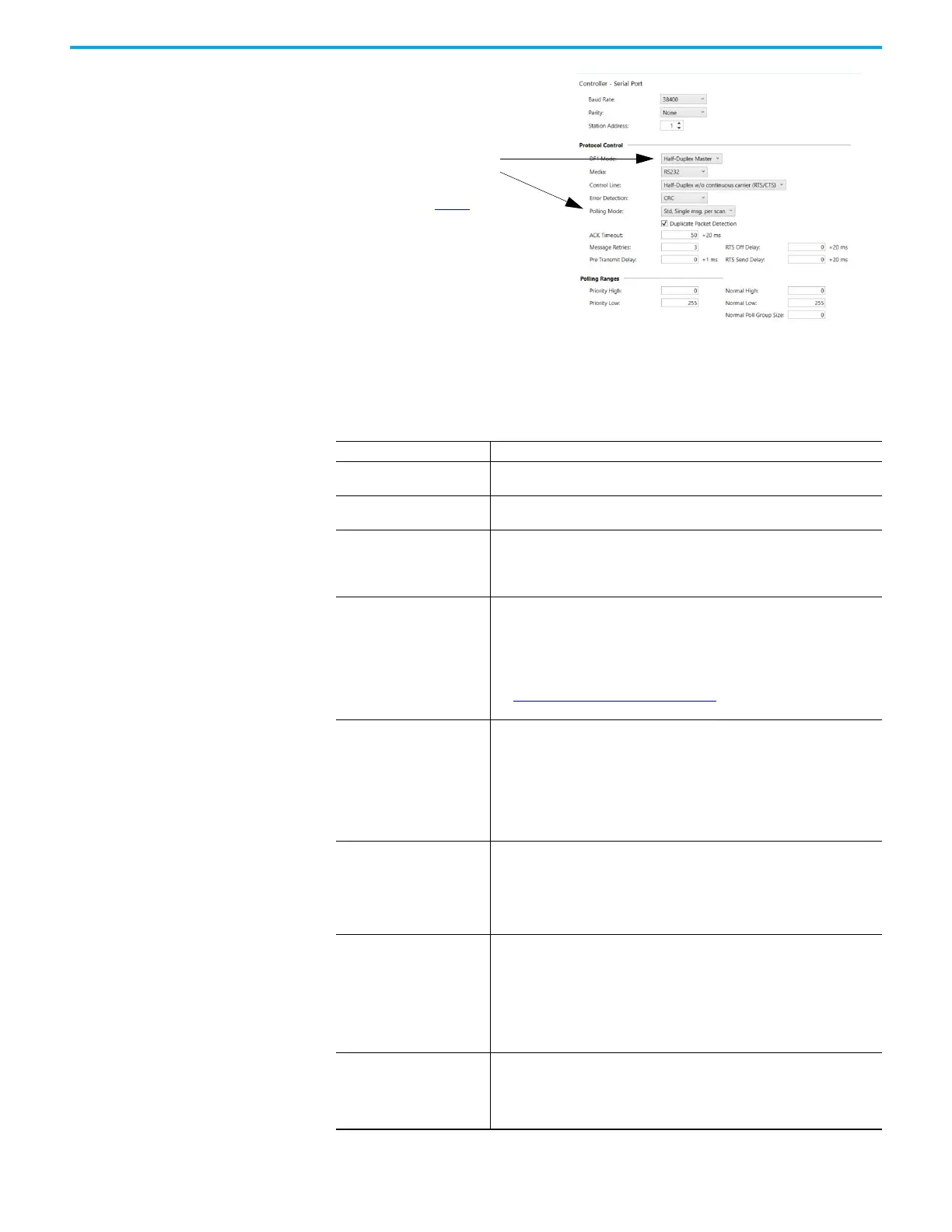